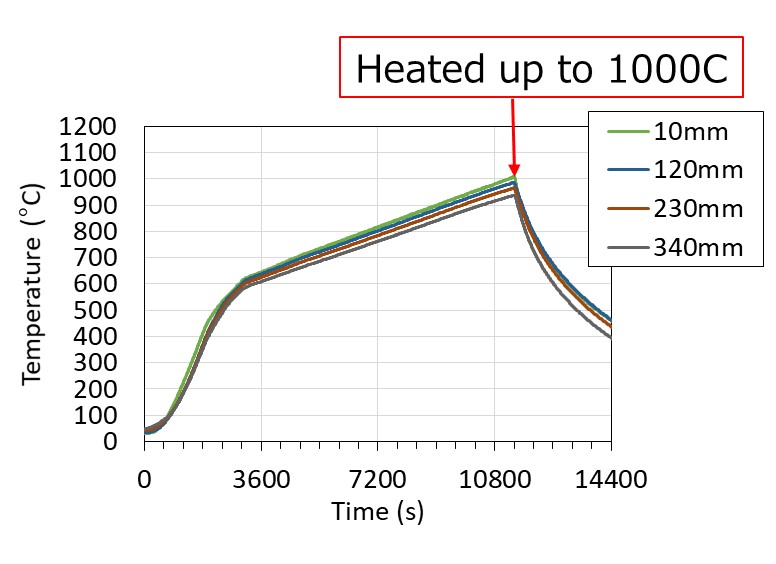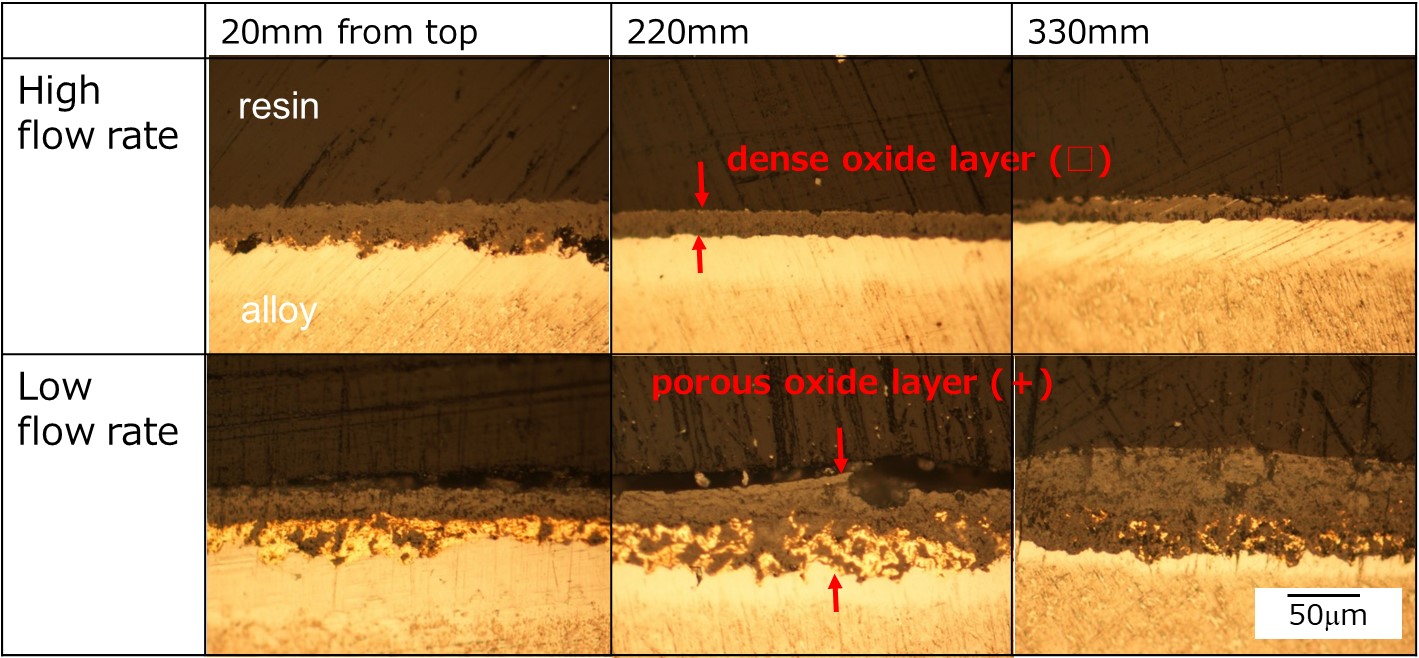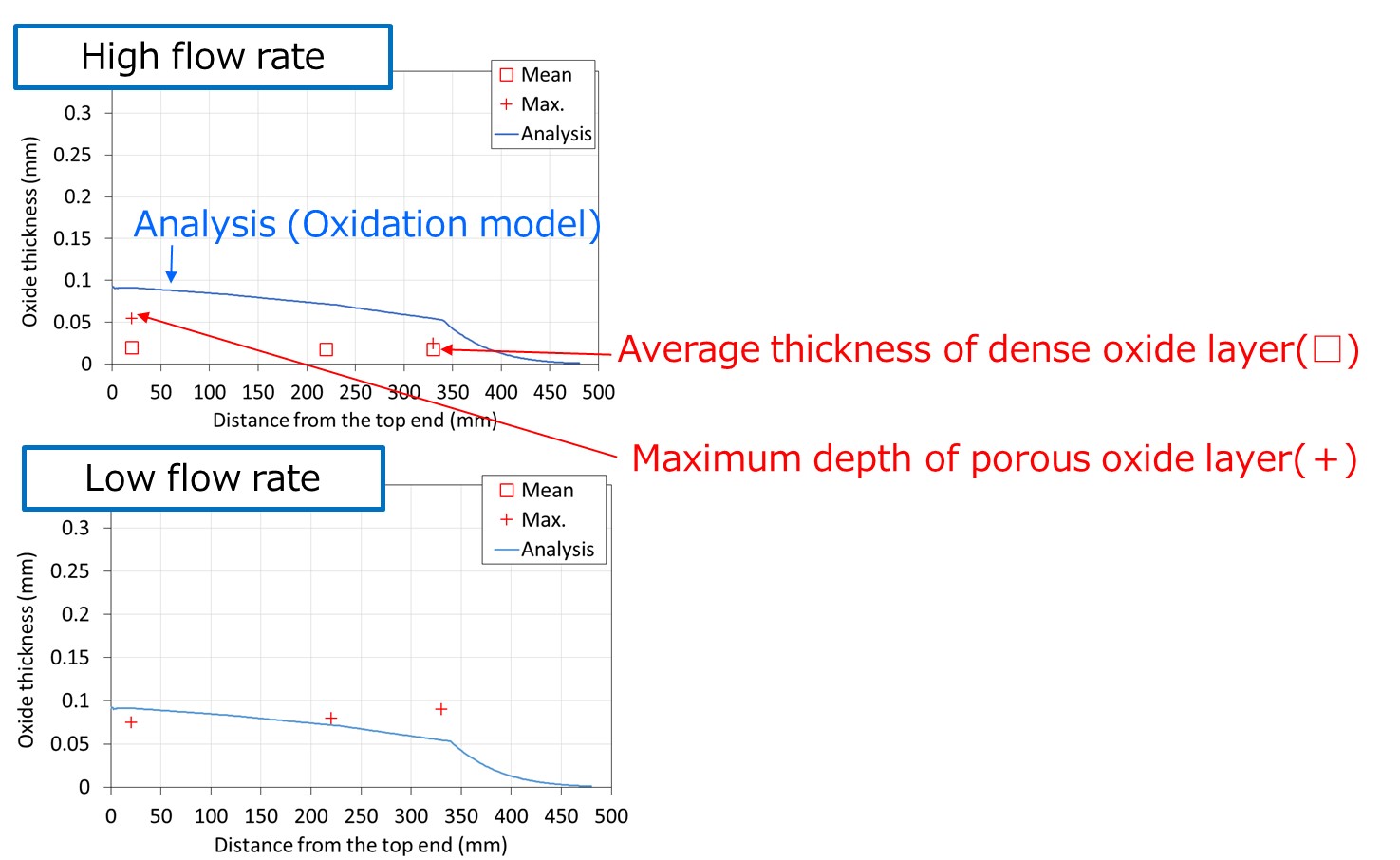
Conventional analytical methods using severe accident codes were maintained to simulate the phenomena in pressure vessel during nuclear reactor accident. Therefore it is required to upgrade them and adapt for SFP loss of, or lost of coolant accident analysis to evaluate the effectiveness of safety measures such as cooling spray and emergency water inlet systems, etc.
The main difference of SFP accident compared to the in-core accident, is existence of nitrogen in the atmosphere. Previous studies indicated that zirconium (Zr) alloy based fuel cladding materials are oxidized more drastic in air than in steam, when it is put in high temperature conditions. This means Zr oxidation model in air environment needs to be constructed and validated to be implanted in the codes for SFP accident analysis.
We had conducted oxidation tests on small samples of Zr alloy claddings in isothermal conditions considering SFP accident using thermobalance for oxidation model construction. For the validation of the oxidation model, oxidation tests on long (500mm) cladding samples in the atmosphere, history, and temperature gradient simulating a SFP accident were effectuated. The thickness of oxide layer formed on the long cladding samples was measured on sample cross section and compered with analytical results obtained in numerical estimation using the constructed oxidation model.

Fig1 Temperature history during oxidation tests on long cladding samples.

Fig.2 Pictures on upper region of long cladding samples after oxidation tests.
Figure 1 shows temperature history during the long zircaloy-2 cladding sample oxidation tests in air. The legend in the graph indicates the distances from the top end of the cladding sample. Temperature gradient and history were decided after the steady state analysis previously done for the SFP accident. Figure 2 gives picture of the samples after oxidation tests in high and low air flow rates. These flow rates were the highest and the lowest flow rate in fuel rack considerable during SFP accident. These samples were cut vertical to the axis and the cross sections were observed (Fig.3). The oxide layer looked darkish on the surface was dense, while beige on the surface was porous. These were both monoclinic ZrO2, and in the porous oxide, ZrN precipitates were observed near the boundary with alloy substance. These compositions were evaluated by using Laser Raman spectroscopy.

Fig.3 Cross section of oxide layer on long cladding samples after oxidation tests.

Fig.4 Distribution of the oxide layer thickness along axis of long cladding sample (Experimental and analytical).
The mean thickness of the dense oxide layer and the maximum thickness of the porous oxide on the cross section were evaluated from the experimental data and plotted on the figure 4 along the distance from the top end of the cladding sample. Oxide layer thickness estimated by using the constructed oxidation model are plotted in the graph as well for comparison. Analytical results reproduced the maximum oxide layer thickness in enough accuracy and revealed that the oxidation model is appropriate.
This oxidation model was applied in severe accident codes such as MAAP and SAMPSON for SFP accident analyses and served for investigation on effectiveness of safety measures.
The shown figures are taken from "Study on Loss-of-Cooling and Loss-of-Coolant Accidents in Spent Fuel Pool, (2) Fuel cladding oxidation", Y. Nemoto, Y..Kaji, T..Kanazawa, K. Nakashima, M. Tojo, Proc. ICONE27, (2019) No. 1345.".